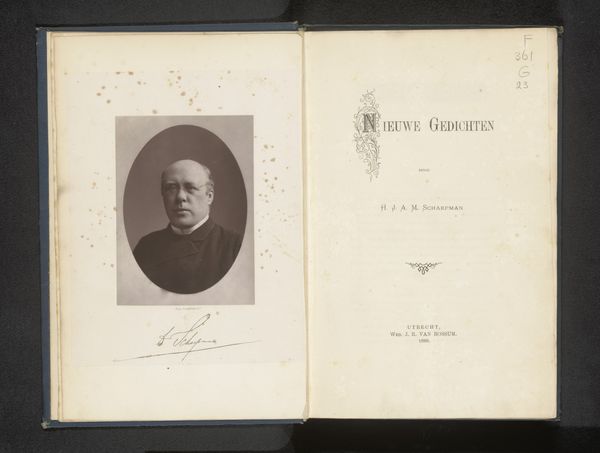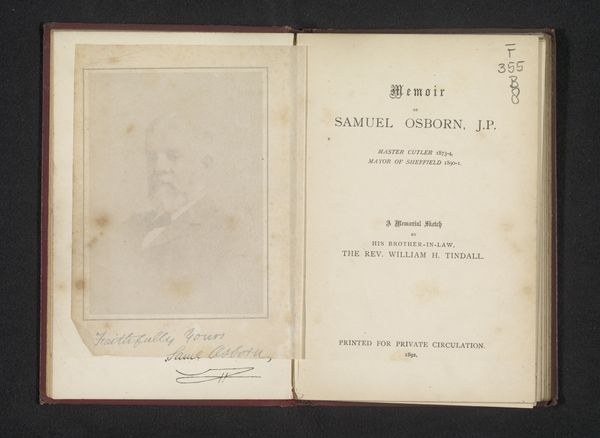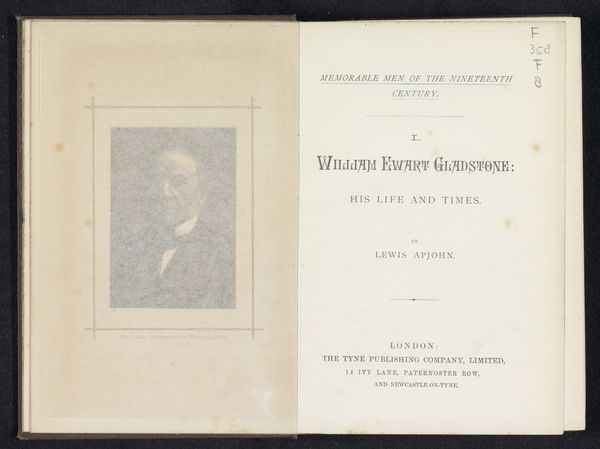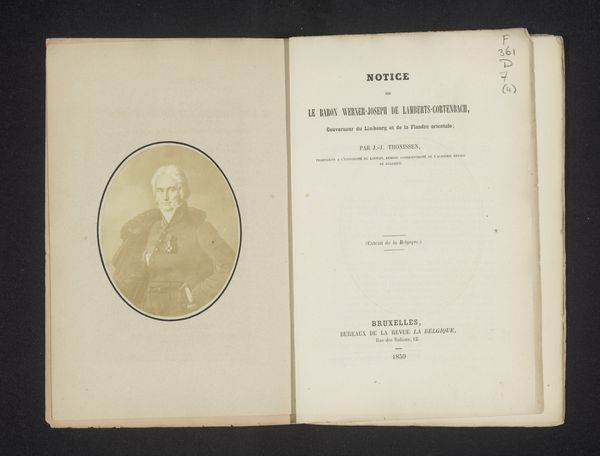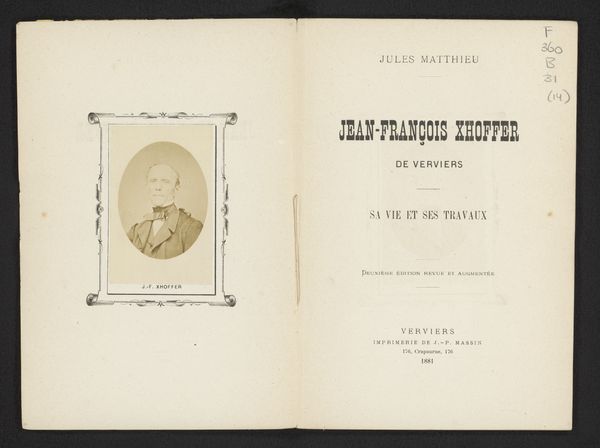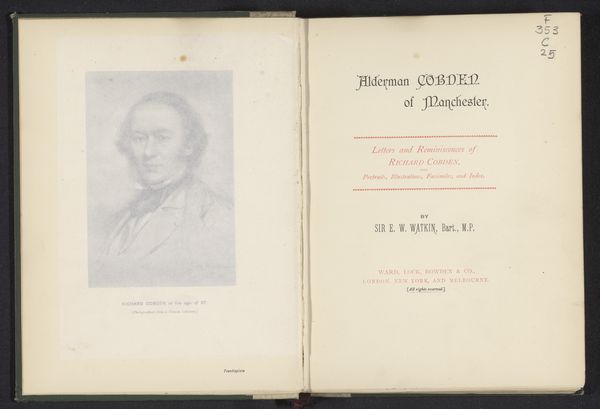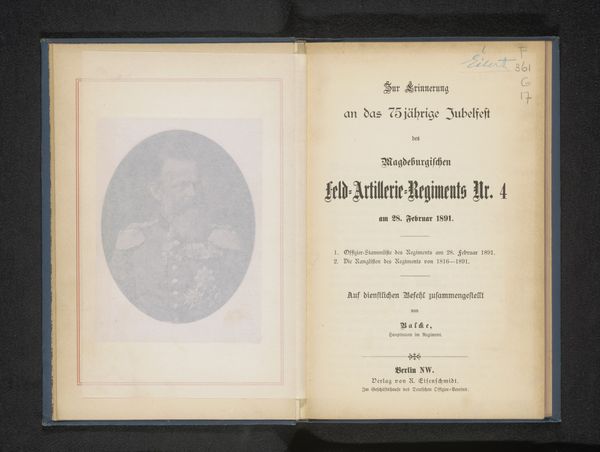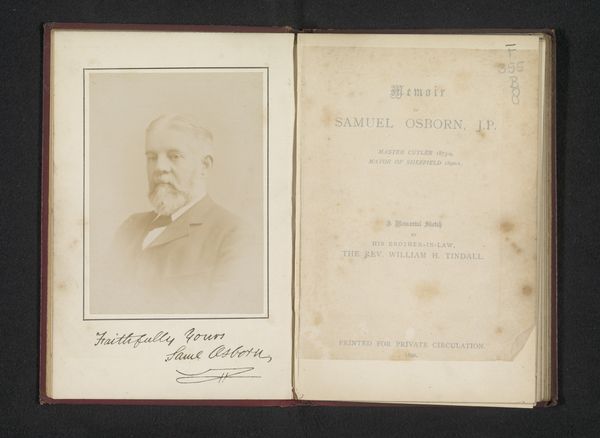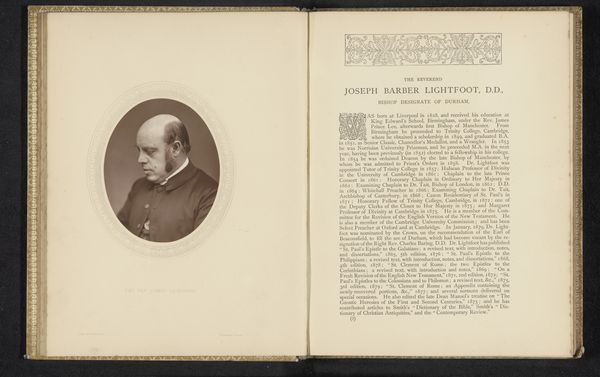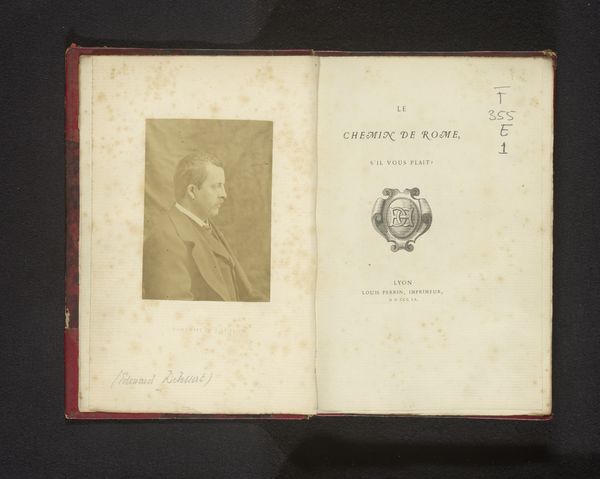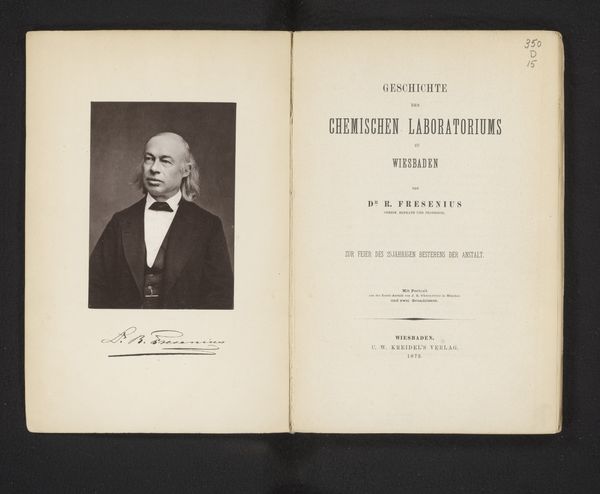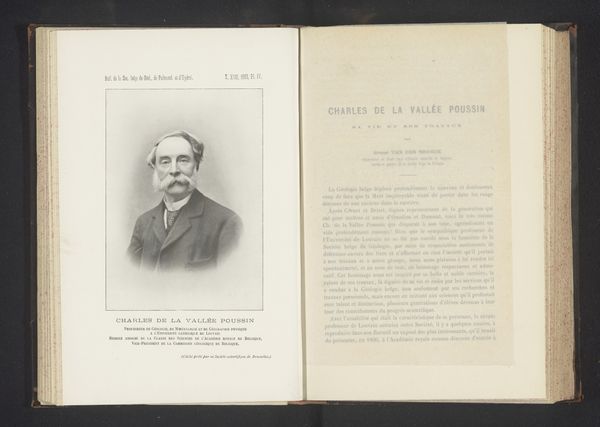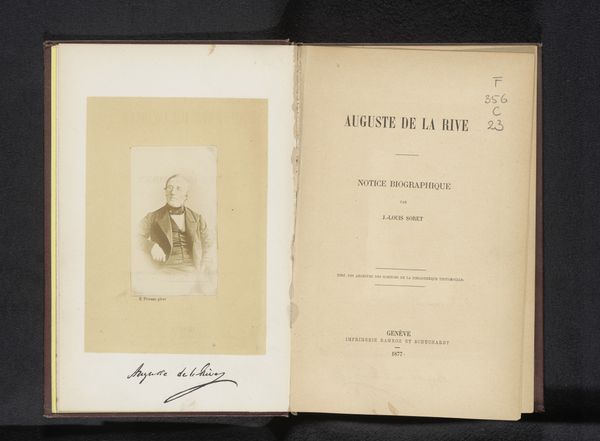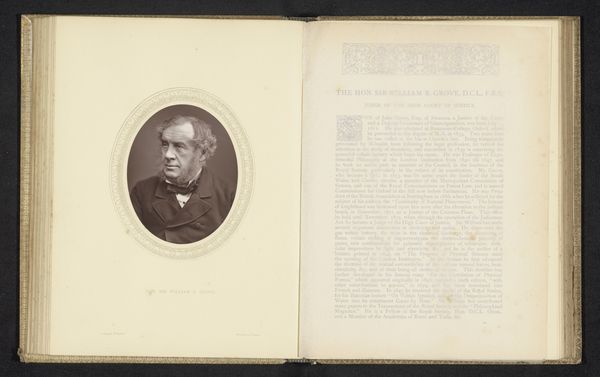
Schriften und Reden von Johannes Cardinal von Geissel Erzbischof von Köln : Erster Band 1869
0:00
0:00
print, photography
#
portrait
#
16_19th-century
# print
#
book
#
photography
#
realism
Dimensions: height 223 mm, width 145 mm, thickness 30 mm
Copyright: Rijks Museum: Open Domain
Editor: So, here we have "Schriften und Reden von Johannes Cardinal von Geissel Erzbischof von Köln: Erster Band," a book from 1869 featuring a photographic print. It’s interesting to see a portrait included in this type of publication, especially of someone of high status in the church. What aspects of this artwork jump out to you? Curator: Well, I think it’s crucial to consider this book in its historical and political context. 1869 was a period of intense political and social change, particularly regarding the power and influence of the Catholic Church in Germany. How might the decision to include a photographic portrait, rather than an engraving or painting, impact its reception? Editor: That’s a good point. Photography was still relatively new then. I guess it could lend an air of modernism, or perhaps even democratic accessibility. Curator: Precisely. And that accessibility is key. This wasn’t just a religious text; it was a statement. Think about the burgeoning power of the press, the rise of mass media. The Church needed to find ways to visually connect with its followers and maintain relevance amid societal shifts. This volume presents Cardinal von Geissel's writings, yes, but it also strategically constructs his image. What message is being conveyed, not just through the text but through his carefully presented persona? Editor: So it’s a power move in a time of change, making sure the Cardinal is visible and seems approachable to the public? It shows a man who embodies both authority and perhaps… modernity? Curator: Exactly! Considering portraiture through a lens of political agency is essential. This image wasn't passively created; it actively participates in the negotiation of power dynamics of the time. The printing press enabled new modes of control. Editor: I hadn't really considered the strategic element. Seeing it this way really brings new meaning to it. Thanks! Curator: My pleasure. Thinking about art as a reflection of its historical forces makes our engagement more robust.
Comments
No comments
Be the first to comment and join the conversation on the ultimate creative platform.
